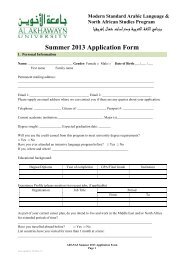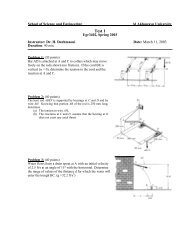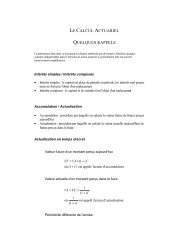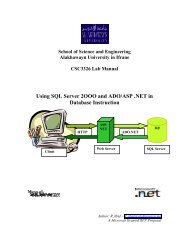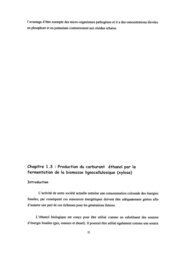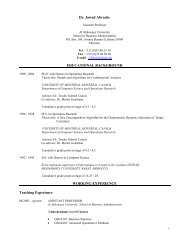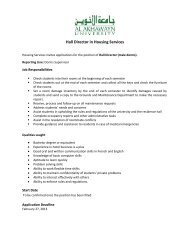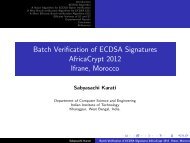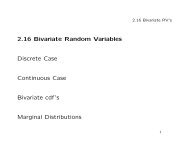Leadership and Values in Language Education - Al Akhawayn ...
Leadership and Values in Language Education - Al Akhawayn ...
Leadership and Values in Language Education - Al Akhawayn ...
- No tags were found...
You also want an ePaper? Increase the reach of your titles
YUMPU automatically turns print PDFs into web optimized ePapers that Google loves.
86Proceed<strong>in</strong>gs of the 27 th MATE Annual Conference- <strong>Al</strong>low youth to BE part of the media; creat<strong>in</strong>g TV channels for schools,universities <strong>and</strong> different educational <strong>in</strong>stitutions would be equalled to noother agent if the target youth are themselves the central focus of media.Strengthen<strong>in</strong>g cultural identification should come form the young <strong>and</strong> futuregenerations.ConclusionIf globalisation is def<strong>in</strong>ed as an accelerated flow of <strong>in</strong>formation, for somesocieties it is a slow but <strong>in</strong>creas<strong>in</strong>g amalgamation of cultures for youngergenerations. Globalisation of <strong>in</strong>formation through the mass media has, then, ledto a “radical change” <strong>in</strong> the rate <strong>and</strong> pattern of socialisation, with youngergenerations obta<strong>in</strong><strong>in</strong>g all types of knowledge from sources that were not availableto societies <strong>in</strong> the past, <strong>and</strong> at an unprecedented rate. Adolescents today probablyknow wider <strong>and</strong> deeper concern<strong>in</strong>g human relations, norms, practices, etc. thantheir parents at their age, let alone two or generations ago. One would reallywonder if the picture we all had of our gr<strong>and</strong>parents, as the wise <strong>and</strong> all know<strong>in</strong>gpeople, still dwells <strong>in</strong> the m<strong>in</strong>ds of youth today.Strong cultural identification usually leads to a strong sense of belong<strong>in</strong>g; thiscontributes to self <strong>and</strong> community pride; a citizen proud of his/her nation couldonly be a responsible one; responsibility is one of the components that pave theway to leadership.BibliographyCovell, K. (1999). Cultural socialization <strong>and</strong> conceptions of war <strong>and</strong> peace: Across-national comparison. In A. Raviv, L. Oppenheimer, & D. Bar-Tal(eds.), Children <strong>and</strong> adolescents' underst<strong>and</strong><strong>in</strong>g of war, conflict <strong>and</strong> peace:Internationa lperspectives (pp.111-126). Jossey-Bass Inc.Howe, R.B., & Covell, K. (2003). The United Nations Convention on The Rightsof the Child <strong>and</strong> the family: Explor<strong>in</strong>g myths <strong>and</strong> realities. Lock HavenInternational Review, 16.Howe, R.B. (2005 June). Citizenship education for child citizens. Canadian <strong>and</strong><strong>in</strong>ternational <strong>Education</strong> Journal, 34 (1), 42-49.Kothari, B, 2000. ‘Same <strong>Language</strong> Subtitl<strong>in</strong>g on Indian Television: Harness<strong>in</strong>gthe Power of Popular Culture for Literacy,’ In K, Wilk<strong>in</strong>s (ed.)Redevelop<strong>in</strong>g Communication for Social Change: Theory, practice <strong>and</strong>Power, pp 135/146. New York: Rowman & Littlefield




